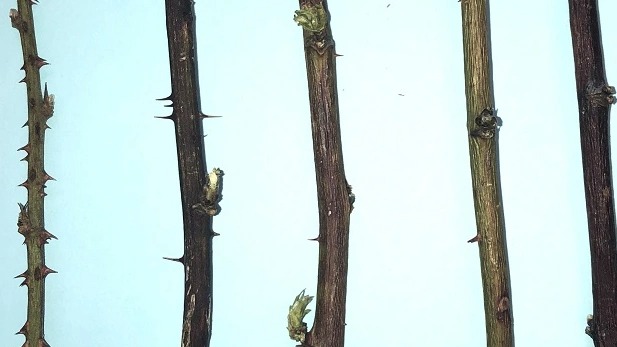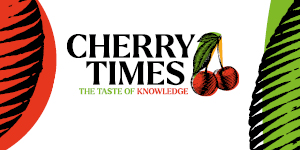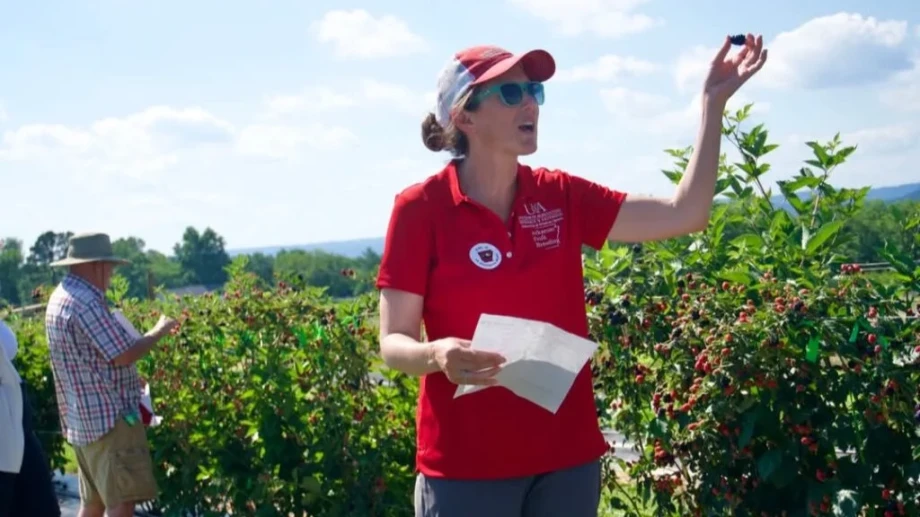Blackberries with prickles are not only inconvenient for consumers but also create serious challenges for growers and handlers. They can damage fruit during harvest, reduce efficiency, and even raise safety concerns.
A research team from the University of Arkansas Department of Horticulture has made significant progress in addressing this long-standing issue. Their study, published in G3 Genes|Genomes|Genetics, identified the precise genetic locus responsible for prickles, offering new tools for breeders who aim to accelerate the development of thornless blackberry cultivars.
Marker technology available to the industry
The project, supervised by Margaret Worthington, associate professor of fruit breeding and genetics, has developed molecular markers that are freely available. Unlike other advanced breeding technologies, no regulatory restrictions are expected, making it easy for companies to adopt.
Service providers such as California-based AgBiotech are already using these markers through KASP (Kompetitive Allele-Specific PCR) assays. The technology is inexpensive—costing only a few dollars (circa 2-3 Euro) per sample—scalable, and accessible for both private and public breeding programs around the world.

From Merton Thornless to modern cultivars
The researchers focused on the non-prickly trait derived from Merton Thornless, a cultivar that has long served as a genetic base for thornless blackberry breeding. They successfully mapped this trait to a specific locus and created diagnostic KASP markers to assist in early-stage seedling selection.
This is the first time such a diagnostic marker has been developed and published for any blackberry trait, marking a milestone in blackberry genomics. With these tools, breeders can now identify the prickle-free phenotype before field trials, greatly reducing time and resources in the breeding process.
Challenges and potential risks
While the innovation opens major opportunities, the team also highlighted potential risks. Because fresh-market blackberries are tetraploid—carrying four copies of each chromosome—genetic mapping is complex, and co-selection of undesirable traits is possible.
This means that alongside thornlessness, other traits such as higher acidity or weaker cold tolerance might inadvertently be passed on. Worthington stresses, however, that these drawbacks are already present in current thornless material.
The new technology, she argues, offers the possibility to introduce broader genetic diversity, improve fruit quality, and maintain thornlessness at the same time.
Looking ahead: the future of thornless blackberries
To build their results, the researchers analyzed 374 thorned and thornless blackberry varieties through genome-wide association studies. They identified a cluster of genetic markers on chromosome Ra04, which breeders can now use to genotype seedlings before planting trials.
Ellen Thompson, global breeding director at Hortifrut and co-author of the paper, confirmed that the markers will strengthen Hortifrut’s fully thornless breeding program by allowing the incorporation of rustic traits from thorny germplasm without reintroducing prickles.
Although the precise causal gene has not yet been isolated, future research will focus on identifying it. The study represents a decisive step toward more efficient, diverse, and consumer-friendly blackberry breeding.
Source: freshfruitportal.com
Image source: Margaret Worthington









